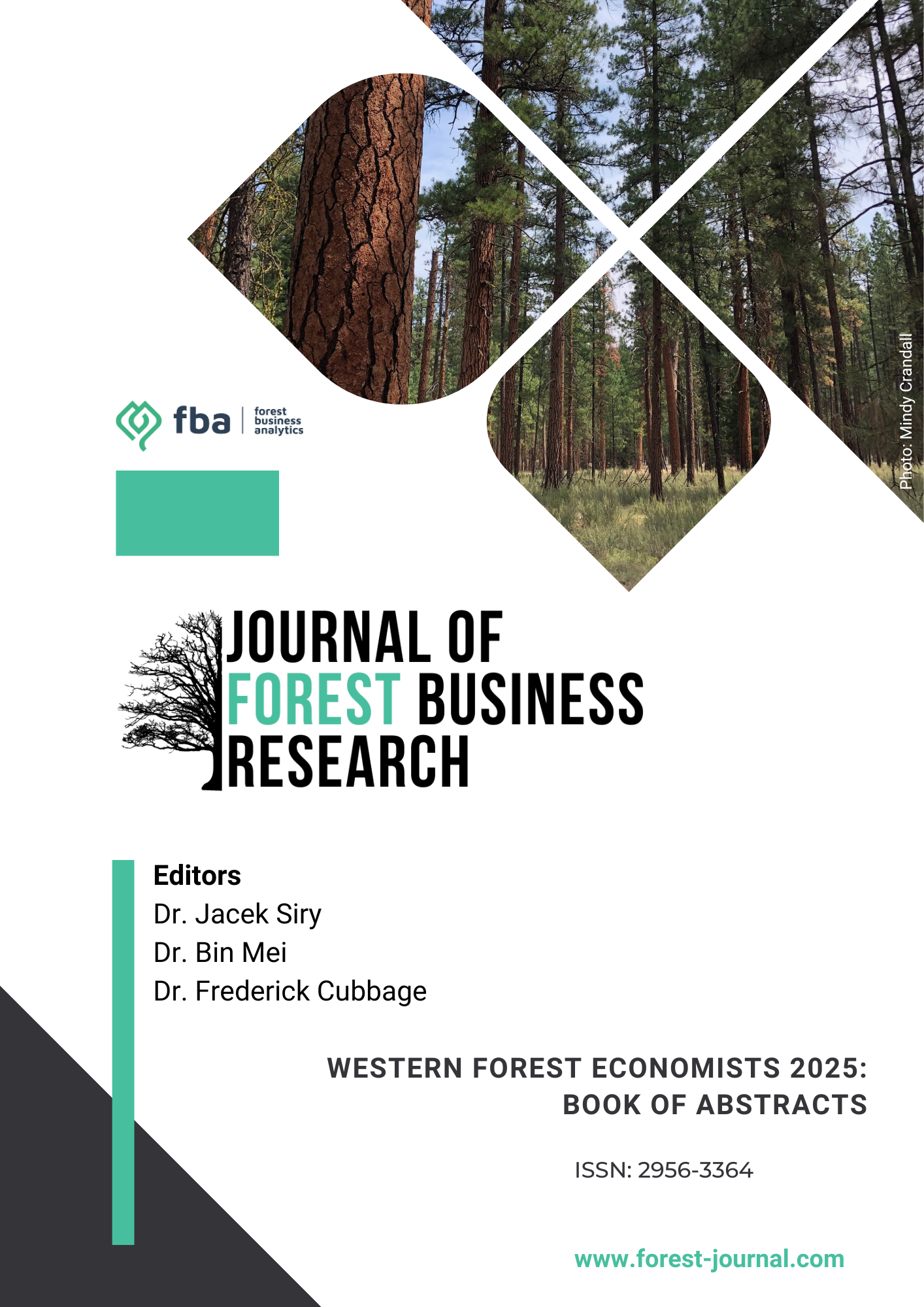Timber yield decline, recovery, and augmentation in transition from short- to long-rotation tree farm management in western Washington
Main Article Content
Keywords
carbon sequestration, carbon storage, extended rotation
Abstract
Any transition away from short-rotation forest management to longer rotations is bound to entail a near-term reduction in harvest levels, as managers forgo regeneration harvests on portions of their ownership in favor of partial harvests that allow stands to continue maturing toward an older age. This study uses Forest Vegetation Simulator (FVS) to model growth, timber yield, and carbon storage on an idealized Lewis County (WA) tree farm originally managed on a 40-year rotation as the owners make the shift to an 80-year rotation. In this simulation, the new management regime includes thinning at ages 30, 45 and 60, followed by a final harvest at age 80. Harvest levels drop by approximately one-third for the first two decades, then catch up after 20 years to approximately the original level, and ultimately surpass the original levels of harvest across the entire landscape by 35 to 50 percent once the transition is complete across all compartments of the ownership. Modeled carbon stocks in the forest plus carbon stored in the product and landfill pools are likewise elevated under the long rotation scenario. Any wide application of these strategies would have to reckon with the impacts of a medium-term decrease in harvest levels on the wood products industry. However, the large areas of 35- to 50-year-old plantations on federal land, established during the heyday of clearcut logging on the national forests, provide ample additional area for thinning that could make up for this shortfall.






